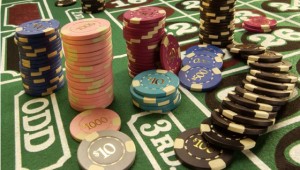Compulsive gamblers seem a sample varied by age, sex and social status.Gambling, in fact, offers a hope of immediate gain, which can be felt as a ‘short-cut solution’ to the economic crisis. Gaming addiction (gambling, or GAP – Pathological gambling) forces us to reflect on what it is sometimes difficult to distinguish between a genuinely playful behavior, a minor ailment and a frankly pathological behavior. Among these three attitudes, in fact, the border is very labile and sometimes confused by social norms and behavior.
The DSM IV TR (American Psychiatric Association, 2000) includes the dependence of the gap between impulse control disorders not elsewhere classified, that is not attributable to other clinical disorders, along with pyromania, to kleptomania, intermittent explosive disorder to, the Trichotillomania (hair pulling and twisting) and impulse control disorder not otherwise specified. The fundamental characteristic shared by these disorders is the inability to resist an impulse or a compelling desire: the subject feels a tension or arousal before committing the rising action and try gratification or relief when the agent; in below may or may not be present remorse and guilt.
For the DSM IV, therefore, the gambling addiction is a persistent and recurrent maladaptive behavior that interferes with the economic situation and relationship of the person who suffers, and with characteristics similar to those of substance addiction. Among the symptoms we can find: excessive involvement in the activity, the need to play more and more money to achieve the desired excitement, failure in attempts to stop the behavior, restlessness and irritability caused by an attempt to break the habit and impairment of important social activities or work.
The addictive games can be classified in different categories, the simplest sees them divided between:
1) instant win games by
2) games that provide for a more prolonged waiting time
The games seem to immediate recovery may be at increased risk of addiction because of the feeling of immediate excitement, that drives the player to want to experience again soon. Similarly appear highly “risky” games where the luck factor prevails, where players chase the win pushed the magical belief that sooner or later the “luck will turn.” According to the Italian Society for Interventions on Compulsive Disorders (SII.Pa.C.), in fact, one of the games addictive, 51% are from video poker, followed by betting on horses, the Lot, the SuperEnalotto and the casinos.
1) instant win games by
2) games that provide for a more prolonged waiting time
The games seem to immediate recovery may be at increased risk of addiction because of the feeling of immediate excitement, that drives the player to want to experience again soon. Similarly appear highly “risky” games where the luck factor prevails, where players chase the win pushed the magical belief that sooner or later the “luck will turn.” According to the Italian Society for Interventions on Compulsive Disorders (SII.Pa.C.), in fact, one of the games addictive, 51% are from video poker, followed by betting on horses, the Lot, the SuperEnalotto and the casinos.
With the advent of Internet gambling appears to have sharply: according to the Committee on Treatment Services for Addicted Patients American Psychiatric Association, in 1997 approximately 6.9 million people were potential Internet gamblers (players compulsive disorder), a year later were 14.5 million and sites dedicated to gambling were over 1300.
The reasons of this phenomenon may be different: the Internet allows for anonymity and can be hidden from the eyes of family members has escaped the limits of space and time. Furthermore, the use of credit cards allows gambling large sums of money without having full knowledge.
The reasons of this phenomenon may be different: the Internet allows for anonymity and can be hidden from the eyes of family members has escaped the limits of space and time. Furthermore, the use of credit cards allows gambling large sums of money without having full knowledge.























